Freight Rail, Logistics, RailState
Western Ports Strike Special Report – Temporary Return to Service
- By RailState
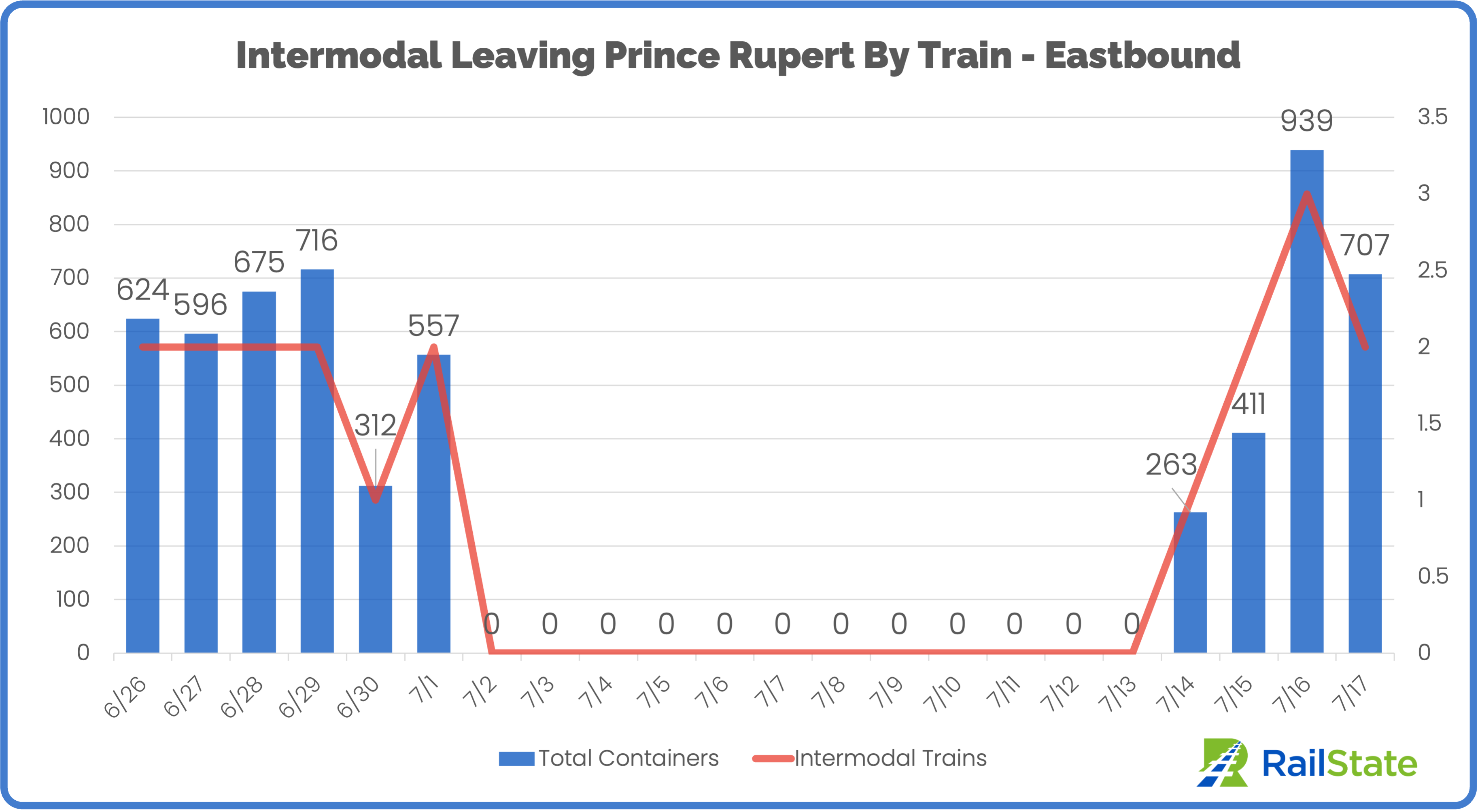
(July 19, 2023) – RailState, the rail industry’s only provider of real-time rail network visibility, independently tracks all freight rail movements across Canada. The work stoppage at the western ports by the International Longshore and Warehouse Union Canada (ILWU Canada) temporarily ended on July 13 with crews returning on July 14. Another stoppage is resuming after the union rejected the proposed agreement that received tentative approval last week. RailState is in a unique position to measure rail traffic through Canada as the ports and railroads work to return to normal operations and through another work stoppage.
Our previous reports on intermodal volume and flows through the ports showed the significant impact of the strike and how shippers responded.
The port terminals and railroads are moving quickly to resolve any backlogs as a result of the work stoppage.
Intermodal
Prince Rupert
There was no intermodal import traffic from July 2 to July 13. Crews returned on July 14th and volume started moving quickly on rail.
In the month of June, Before the strike, an average of 543 containers moved eastbound on just less than two trains per day (55 trains for the month). CN is now moving intermodal volume greater than than the average volume before the work stoppage (580 containers per day compared to 543).
On the 14th, one intermodal train left Prince Rupert headed eastbound carrying 263 containers. On Saturday, the 15th, two trains carried 411 containers eastbound, on Sunday, July 16th, that jumped to three trains carrying 939 containers, and Monday, July 17th saw 2 trains and 707 containers moving eastbound.
Intermodal traffic entering the port for export also increased quickly once crews returned to work at the port. There was no westbound intermodal traffic on the first day of the return to work (July 14). It makes sense that we would see eastbound traffic out of the port start before westbound traffic as teams work to unload ships that had been moored and waiting at Prince Rupert.
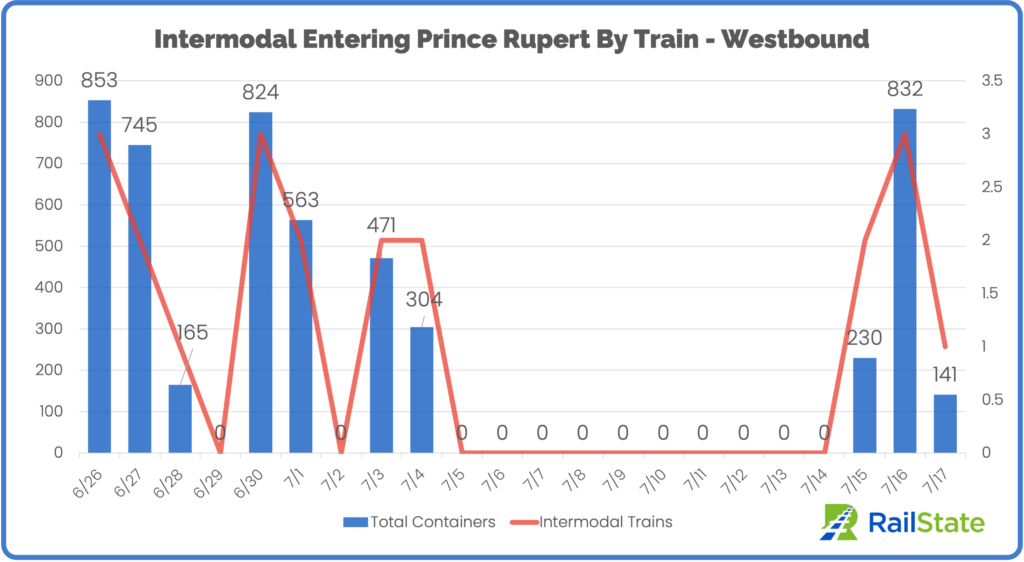
Port of Vancouver
Intermodal traffic eastbound out of the Port of Vancouver (measured at Mission City) has also rapidly returned to above average levels. Nearly 1,400 containers moved on 6 trains on July 17, which is a couple hundred containers higher than the daily average volume of 1,182 containers from before the strike.
Note – In order to capture international containers, these numbers only include 20’ and 40’ containers moving on intermodal trains. The larger, 53’ domestic containers are excluded from the totals. Domestic intermodal continued to move during the strike.
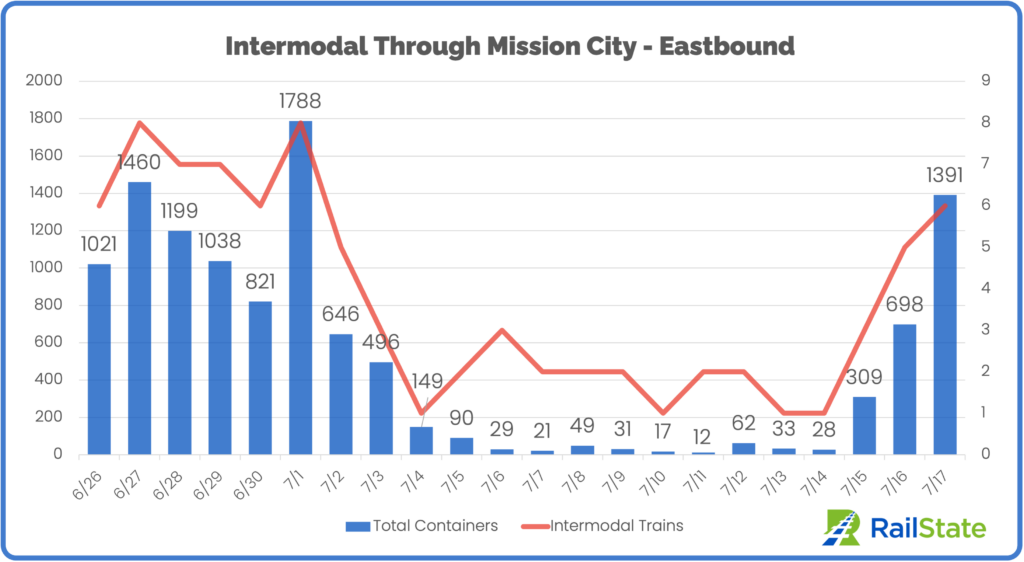
Intermodal volume moving into the Port of Vancouver (measured at Chilliwack) has also quickly returned to levels seen before the strike.
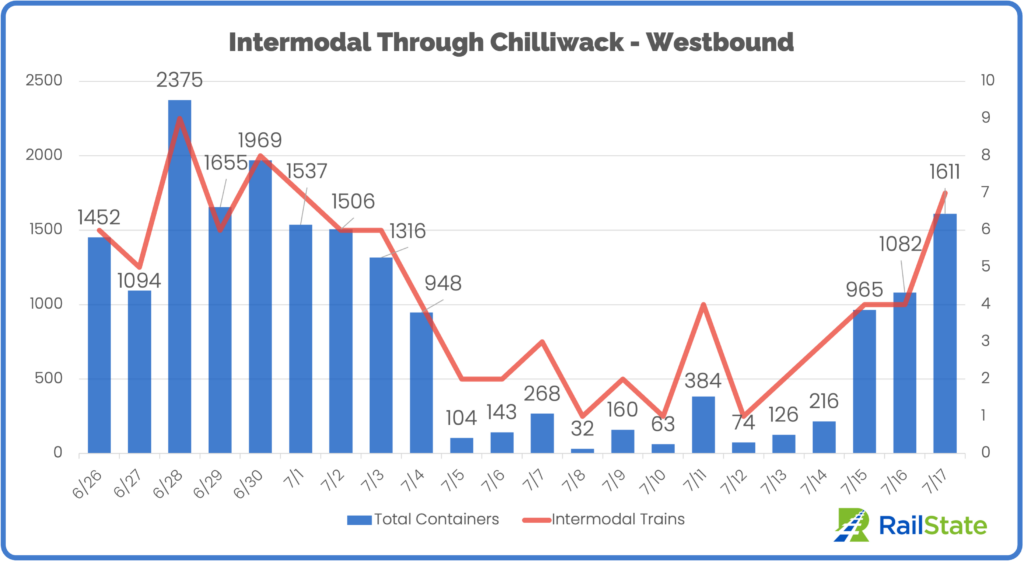
Where Did Trains Go During the Strike?
The Port of Vancouver received 7 trains per day on average during June. Many of these trains originate in eastern Canada for a trip lasting an average of 4 to 6 days. During normal operations, there would be around 35 westbound trains underway. Instead of completing the journey to Vancouver, most of these trains were held at various points across the route and are restarting. For those that arrived into the Port of Vancouver area during the strike, the trains had to wait for unloading until the end of the work stoppage.
There were also about 20 trains that entered the port in the few days before the start of the strike and remained in the port region, suggesting that additional capacity will be needed to resolve backlogs. The railroads have ramped up volume to clear the ports and now face another slowdown with the strike resuming.
Commodity Flows
Prince Rupert
Not all terminals on the west coast were shut down by the work stoppage. Coal continued to move through Prince Rupert at a terminal operating under a different labor agreement than the majority of the port terminals on the west coast and did not experience a work stoppage. Coal volume for export through Prince Rupert increased 52.4% during the strike as shippers sent trains to Prince Rupert instead of the Port of Vancouver.
Volume has started a modest decline with the end of the strike. We expect this trend to continue as shippers start sending shipments to the Port of Vancouver again.
Similarly, grain continued to be exported. Grain is required to keep moving under Canadian law allowing grain exports to continue. Grain increased significantly, rising 77.8% in terms of average daily volume of grain unit trains. Grain has also started to show declines since the end of the strike.
Note – In an earlier report, we compared total volume for the strike period (July 1-11, at the time) and the same number of days preceding the strike (June 20-30). The comparisons below look at average daily volume, not total volume. The average daily volume better shows the changes in traffic as the ports and railroads work to clear any backlogs and get back to normal operations.
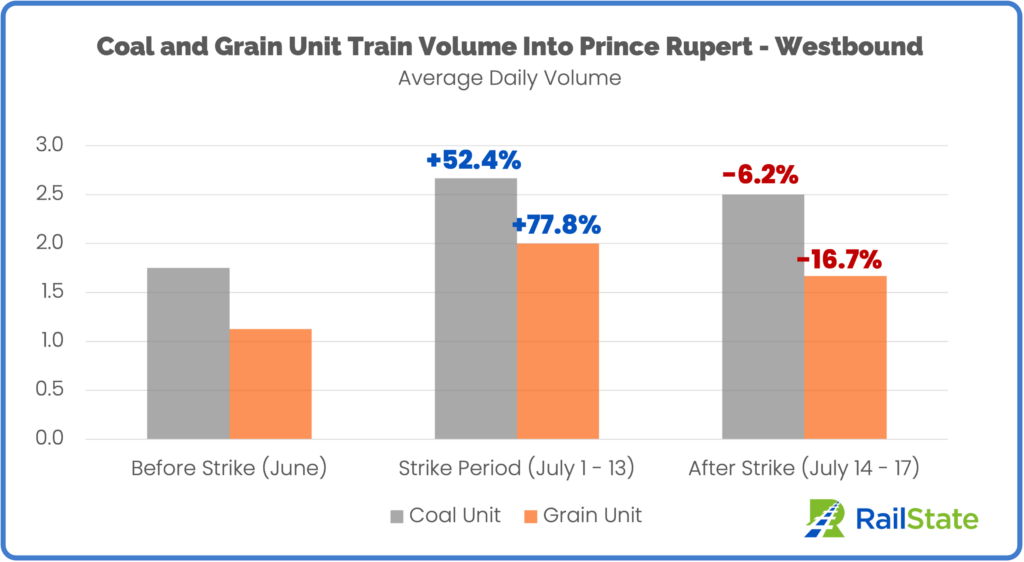
Port of Vancouver
Coal moving through the Port of Vancouver slowed significantly during the strike, dropping 37.1%. With the strike shutting down exports through Neptune Bulk Terminals in Vancouver, some shippers shifted to Prince Rupert. Westshore Terminals in Vancouver continued to operate so some coal continued to move through Vancouver. After the end of the strike, coal unit train volume is starting to increase through the Port of Vancouver.
Grain is experiencing a different trend, having increased during the strike, it is now returning to pre-strike levels.
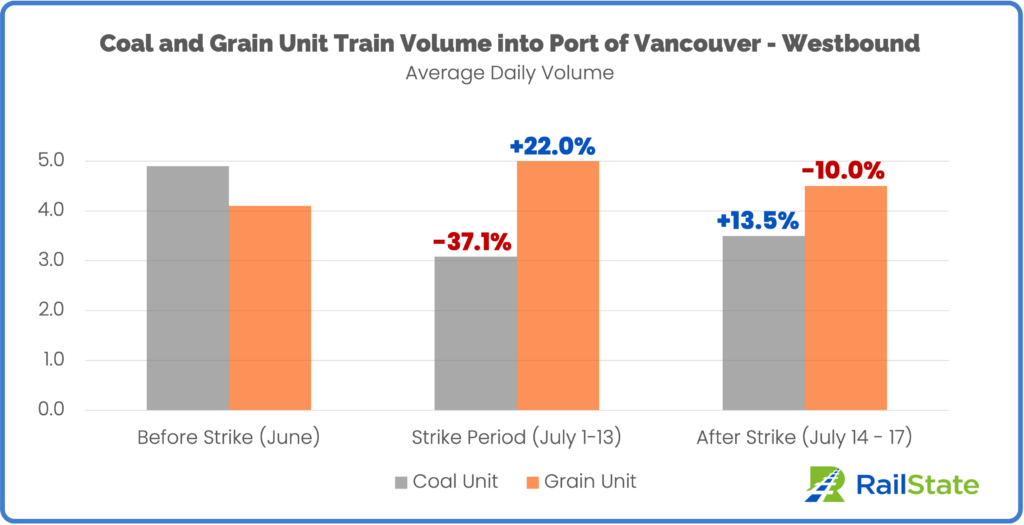
Continuous Updates
RailState will provide additional updates as the work stoppage at the western ports resumes.
Subscribe here to receive these free reports as they are released. For shippers, analysts, and others looking for more information on rail network visibility and navigating rail operations during this and other disruptions, please reach out to contact@railstate.com.
Categories
- AI (6)
- Freight Rail (125)
- Logistics (88)
- RailState (125)
- Technology (5)
- Uncategorized (3)
Copyright © 2024
RailState LLC


